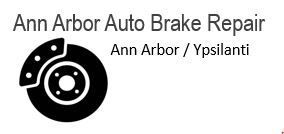When Should Brake Lines And Hoses Be Changed?

Brake lines and hoses are the communication pathways between the brake pedal and the brake components in the wheels. If this pathway is disrupted, worn or broken, the ability of your vehicle to slow down or come to a stop may be compromised.
Understanding Brake Lines And Hoses
Brake lines and hoses are all integral components of a vehicle’s braking system, ensuring that hydraulic pressure is properly transmitted from the master cylinder to the brake calipers, ultimately allowing for safe stopping. These elements serve different but equally important roles, each contributing to the overall functionality and reliability of the braking system. Understanding their purposes, how they work together, and their failure modes can help drivers maintain their vehicles and avoid costly repairs or safety risks.
Why Brake Lines Matter?
Brake lines generally refer to the rigid, metal tubes that run from the master cylinder to the individual brakes. These metal lines are typically made of steel and are designed to withstand high pressure and the harsh conditions of the road. Their main role is to carry brake fluid, transferring hydraulic pressure through the system when the brake pedal is pressed. While durable, metal brake lines are prone to corrosion, especially if exposed to road salt, moisture, or other harsh elements over time. One of the most common failure modes for brake lines is rust, which can weaken the metal and lead to leaks. When rust or corrosion becomes severe, it can cause the brake line to fail completely, leading to brake fluid leakage and a loss of braking power.
Why Brake Hoses Matter?
Brake hoses, on the other hand, are flexible rubber or braided stainless steel tubes that connect the end of the metal brake lines to the brake calipers. These hoses allow for movement and flexibility as the wheels rotate, preventing the brake lines from becoming taut or damaged. The primary function of brake hoses is to deliver brake fluid from the metal lines to the calipers, where it is used to actuate the brakes. Rubber hoses are more vulnerable to wear and tear compared to metal lines. Over time, they can crack, become brittle, or even collapse under pressure. The most common failure mode for rubber hoses is leakage due to cracks or punctures, which can lead to a soft brake pedal, reduced braking efficiency, or complete brake failure if left unchecked.
Maintenance of Brake Lines and Hoses
When it comes to maintaining the braking system, it’s essential to replace brake lines and hoses before they fail. Signs of failure can include visible damage such as cracks, cuts, or abrasions on the hoses or pitting and rust on the metal lines. Fluid leaks under the vehicle, a soft or spongy brake pedal, or reduced braking effectiveness are other key indicators that a replacement may be necessary. Brake lines and hoses typically need to be replaced every 6 to 10 years or after approximately 100,000 miles, depending on driving conditions and climate. Harsh conditions, such as exposure to salt, extreme temperatures, or rough terrain, can accelerate wear and tear, necessitating more frequent inspections and replacements.
It is important to understand that when replacing brake lines or hoses, it is often recommended to replace them in pairs. For instance, if one brake line or hose needs replacing on an axle, the other one should be replaced as well. This ensures balanced braking performance and helps avoid uneven wear that could affect the braking system’s overall functionality. Ignoring this recommendation may lead to diminished braking power, which can compromise vehicle safety. Additionally, when replacing brake hoses, it's often wise to consider stainless steel braided hoses. These are more durable and resistant to wear than standard rubber hoses, making them a good option for those living in regions with harsh climates or those who frequently drive in challenging conditions.
When To Replace Brake Lines And Hoses?
Regular inspection and proactive replacement of brake lines, hoses, and tubes are critical for vehicle safety. The braking system is not a component to ignore or postpone maintenance on, as failure of any part of the braking system can have catastrophic consequences. Even if brake lines and hoses appear to be in good condition, age, and mileage can take a toll on their integrity. For example, brake hoses typically have a lifespan of around six years, but if they are exposed to high mileage or extreme conditions, they may need to be replaced sooner. Come by Ann Arbor Auto Brake Repair for a professional inspection. We can help catch brake line and hose issues early, ensuring that the braking system remains in optimal condition and reducing the risk of dangerous brake failure.
To further protect against premature wear, vehicle owners should ensure they are following a proper maintenance schedule, which includes regular brake fluid flushes. Brake fluid can absorb moisture over time, which can lead to contamination and degradation of the brake hoses and lines. Contaminated brake fluid can corrode metal components, weaken hoses, and reduce overall braking efficiency. At Ann Arbor Auto Brake Repair, we will regularly inspect and replace dirty brake fluid and flush the system so that the lifespan of brake lines and hoses can be extended, and the vehicle’s braking performance will remain at its best.
While brake lines and hoses all work together to ensure a vehicle’s braking system functions properly, they each have distinct roles and failure modes. Regular inspection and proactive replacement of these components are essential to maintaining vehicle safety. Always be aware of the signs of wear, including visible damage, fluid leaks, and changes in brake pedal feel, and have your braking system inspected. We are here to help, especially if you suspect any issues. Call us up at (734) 537-7344 or request a quote at Ann Arbor Auto Brake Repair today.
